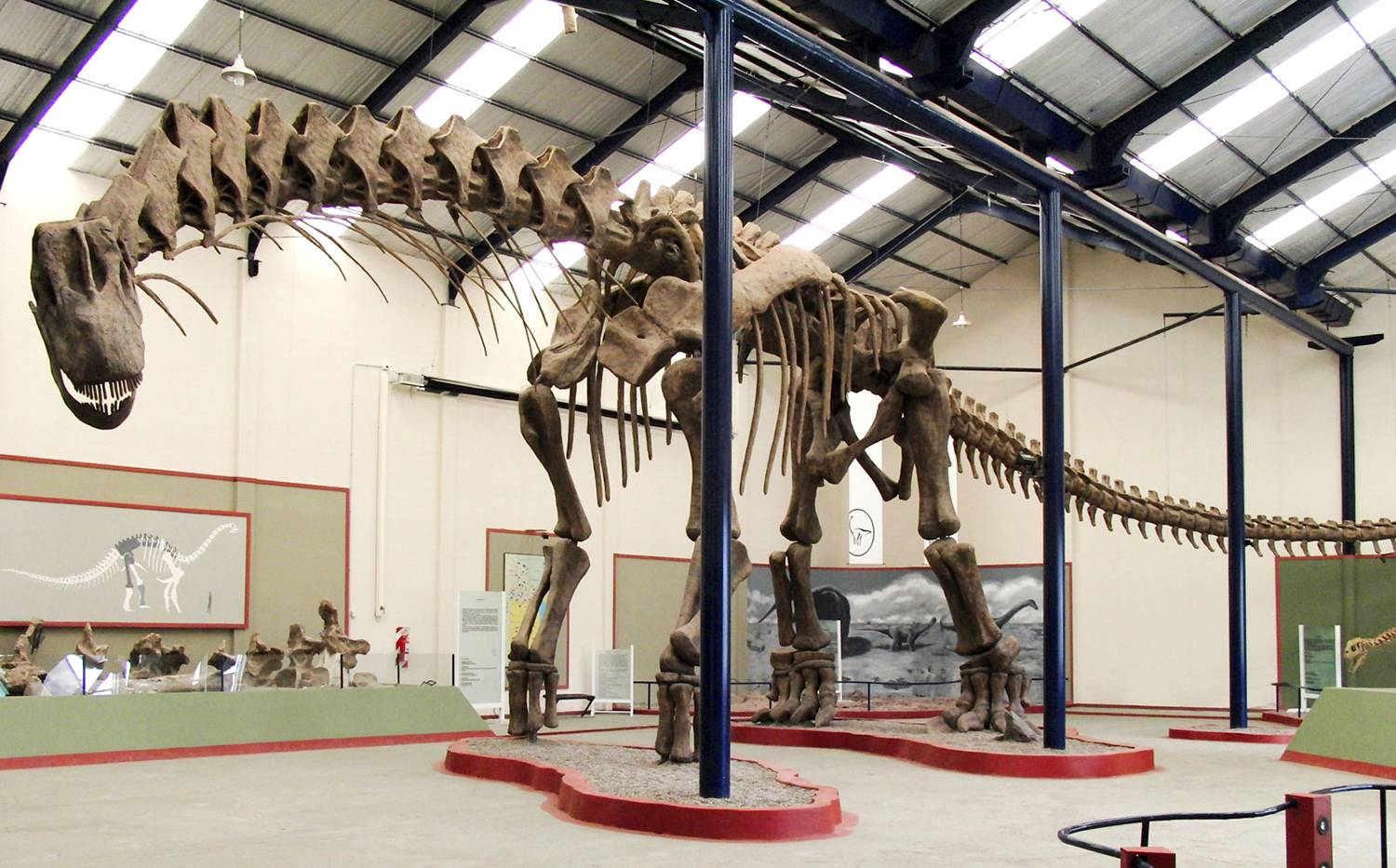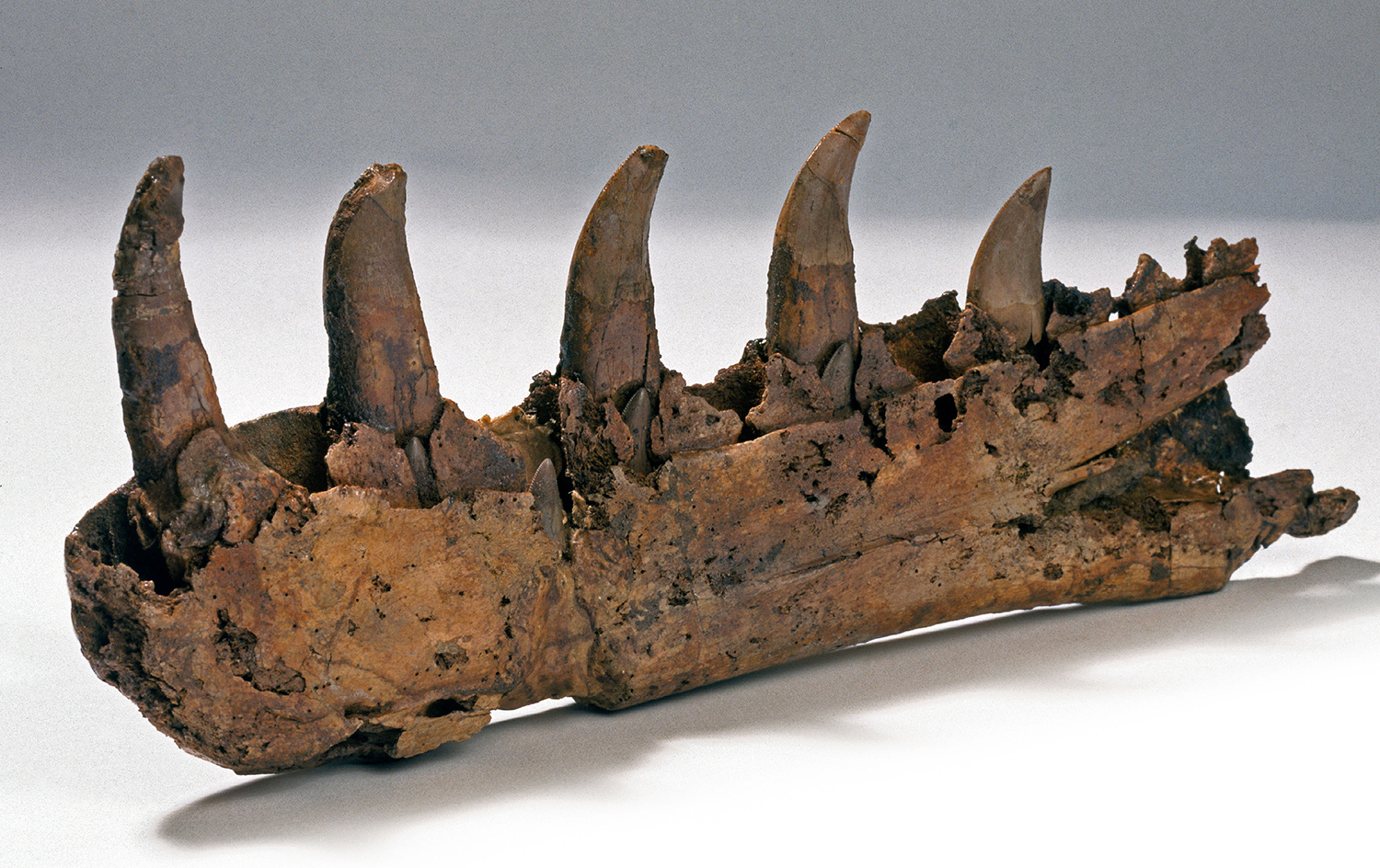Dinosaurs Were Here!
Scientists discovered hundreds of dinosaur tracks that date back millions of years.
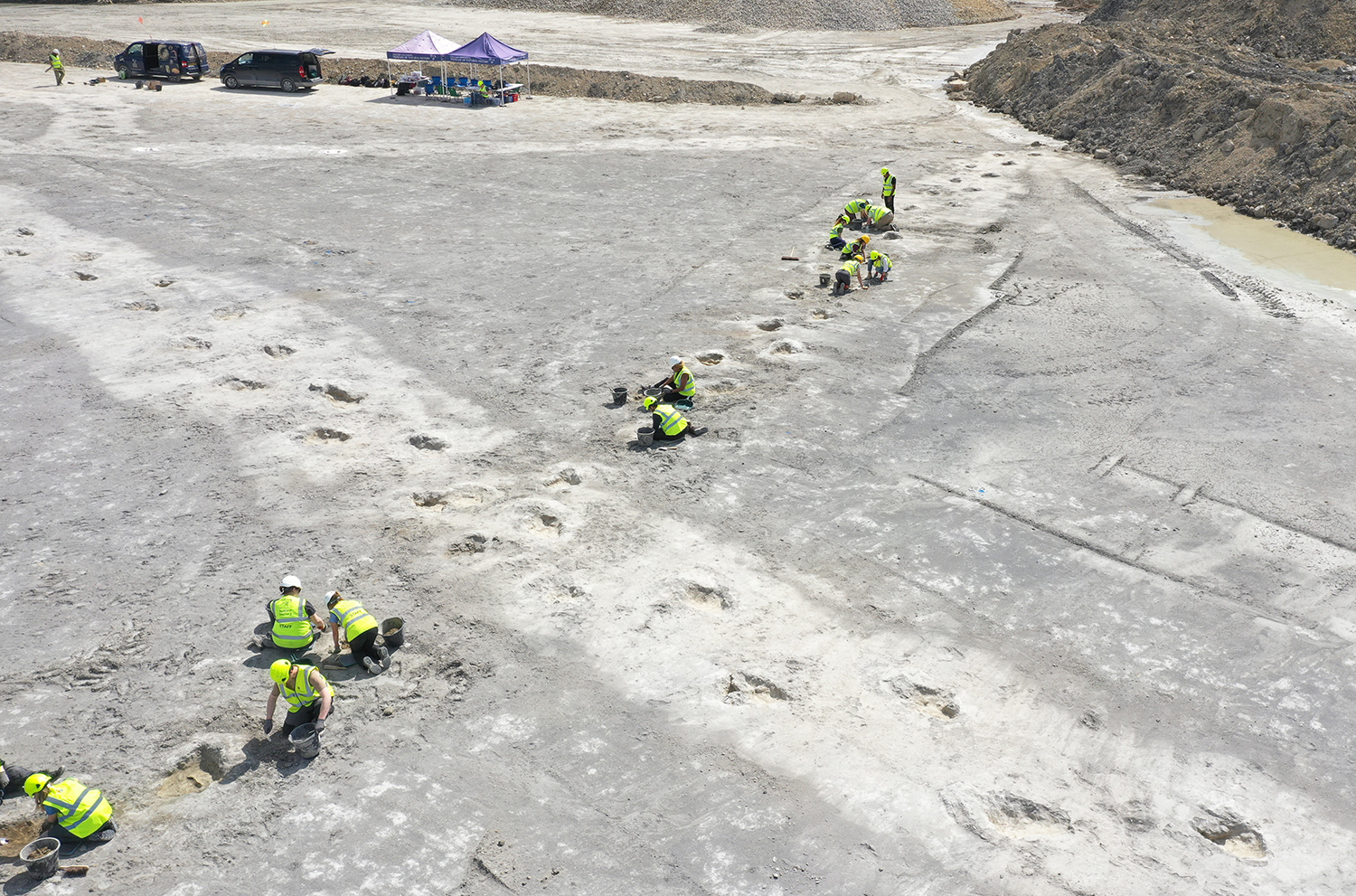
© University of Birmingham
Scientists discovered about 200 tracks forming five paths. The tracks were created in limestone that dates back 166 million years.
It’s not unusual to see animal prints in mud or snow, but ancient prints are much rarer. Some recently discovered animal tracks were created 166 million years ago, by dinosaurs.
Scientists uncovered nearly 200 dinosaur tracks in a quarry—a place where limestone is mined—in southern England. The tracks follow five different paths, suggesting that five dinosaurs were walking to five different places at around the same time. The longest path is 492 feet (150 meters) long. At one point, the paths cross. This makes scientists wonder if the dinosaurs interacted in some way.
Four of the paths were most likely created by a type of dinosaur called Cetiosaurus, an herbivore (plant eater) that was about 59 feet (18 meters) long. The Cetiosaurus tracks measure 35 inches (90 centimeters), or almost three feet, in length. The fifth path was created by a type of dinosaur called Megalosaurus, a carnivore (meat eater) that was about 30 feet (9 meters) long. The Megalosaurus tracks were only a bit smaller than those left by Cetiosaurus.
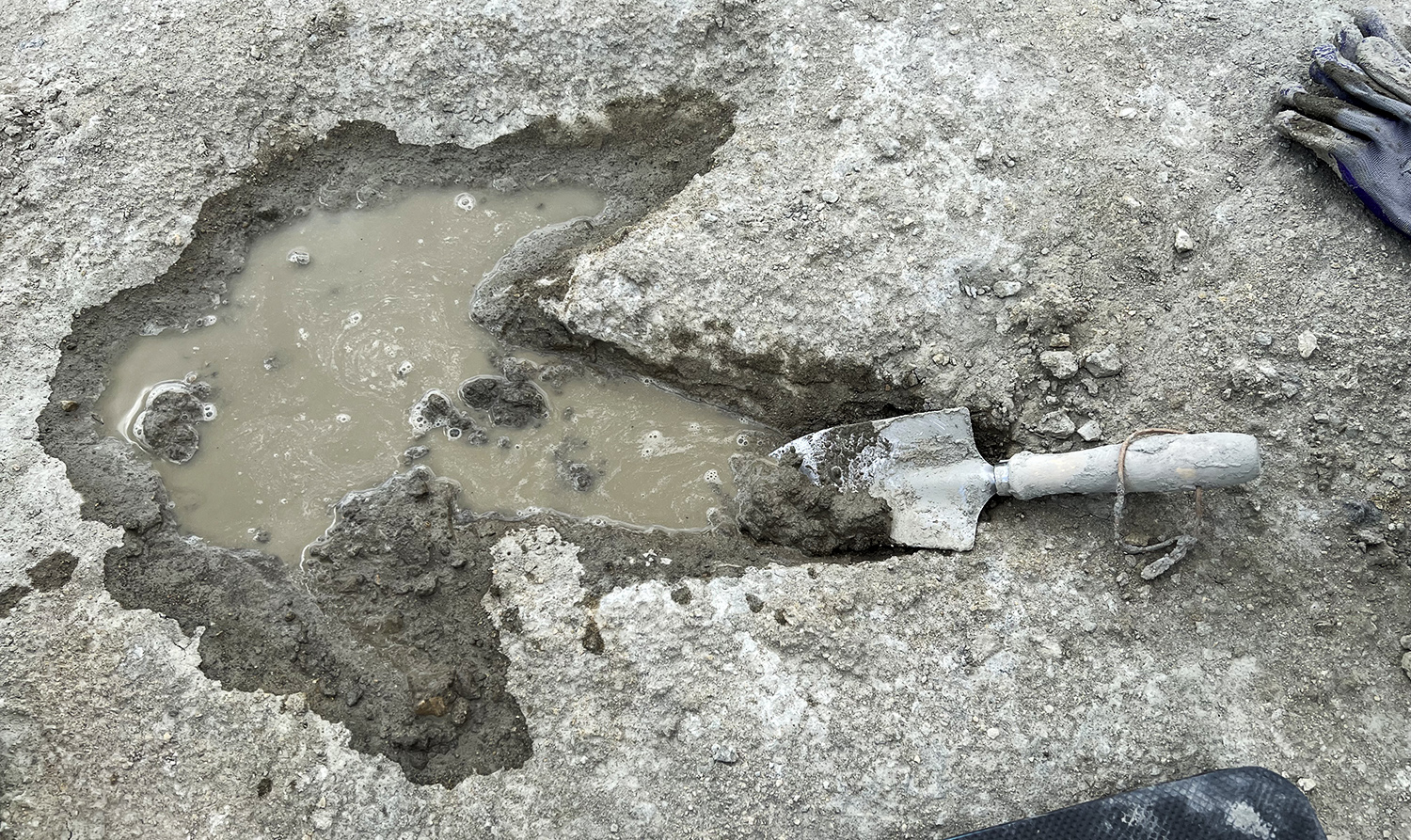
© Emma Nicholls/Oxford University Museum of Natural History
Scientists placed this shovel here to show how large this dinosaur footprint is!
Where were the dinosaurs going? Scientists can’t be sure, but they can tell that the creatures were moving northeast at about 3 miles per hour (5 kilometers per hour). That’s about as fast as humans walk. The dinosaurs didn’t seem to be in hurry, although scientists don’t believe Megalosaurus was able to run anyway.
Lawrence Tanner is a professor at LeMoyne College in the United States who studies fossils to learn about prehistoric life. Tanner was not involved in the study of the dinosaur tracks in England, but he explained how scientists can determine the speed of an animal from its tracks.
“The general rule…is that the faster the animal is moving, the farther apart the footprints will be,” Tanner told CNN.
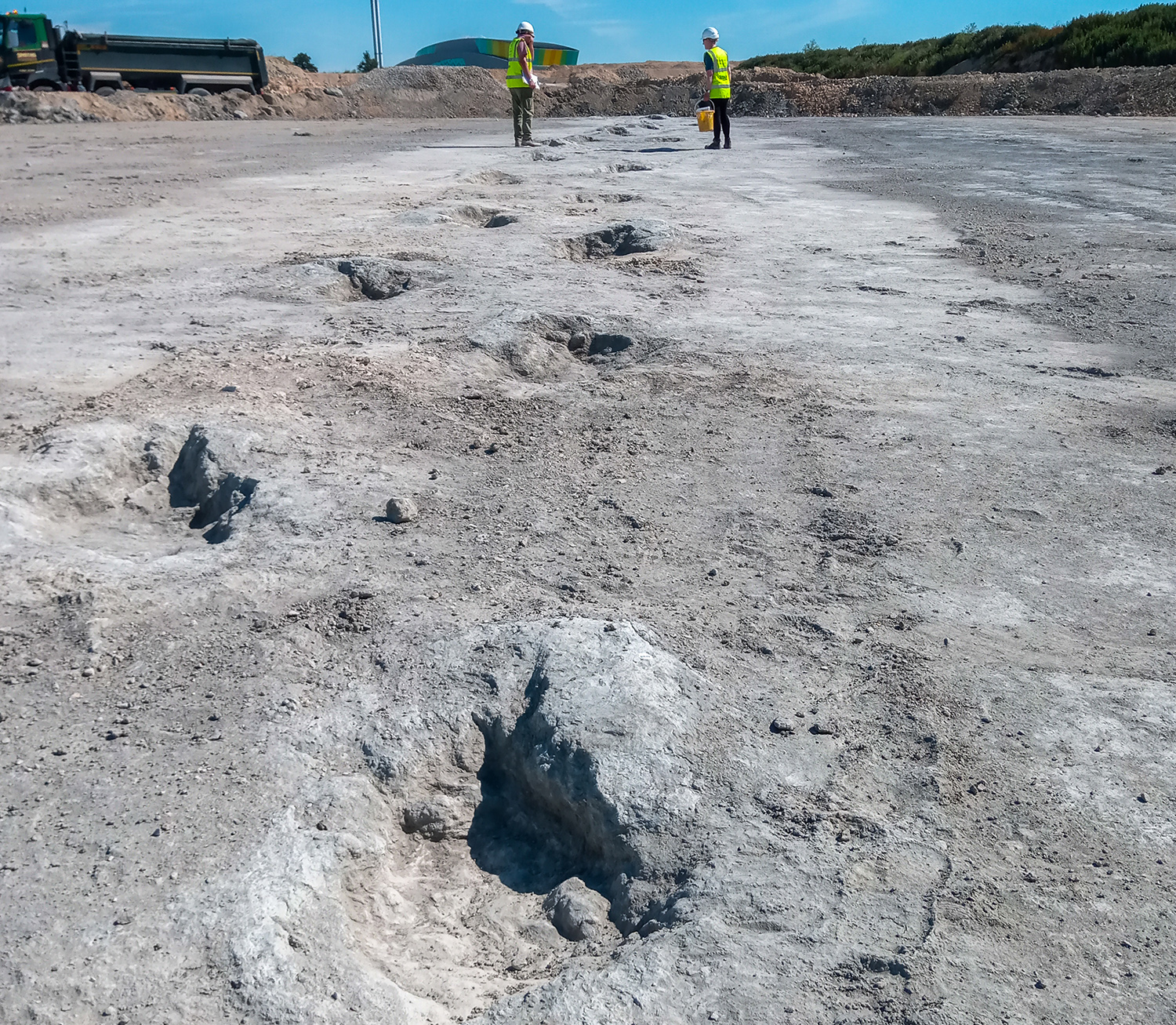
Where was this dinosaur going?
Kirsty Edgar, a professor of micropaleontology at the University of Birmingham in England, did study the newly uncovered tracks. Edgar says dinosaur footprints give scientists all sorts of information about dinosaur behavior.
“[The tracks are] like a snapshot into the day of the [dinosaurs’] life, and what they were doing,” Edgar said.


